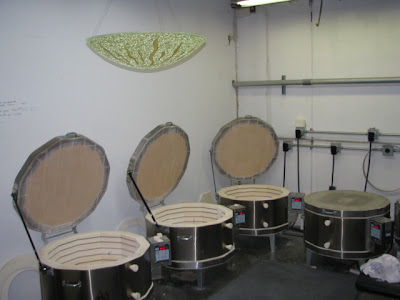It's been a tough summer here for the garden at the studio. Our cool, damp spring stretched well into summer, and even though we had an intense burst of warm, dry weather, it hasn't been enough. Tomatoes have started to ripen, but squash, zucchini and cucumbers probably won't produce this year.


We also continue to battle the most aggressive slugs in the world, and anything I've sowed from seed gets mowed down before it makes any headway.
Luckily we have well established kale and chard from the spring, and I also started some more in addition to napa cabbage and collards in a seedling tray. I'm hoping to get them a few inches tall and possibly protect their stems with something when I put them in. Green beans are just starting, and if we get a few more days of sun we'll get a good batch of them.
The peas that George sowed in July managed a handful of pretty sweet peas before it got too hot for them.
The plants still look pretty healthy, and if it stays cool they may continue. Fava Beans were a hit this year, so we'll likely do more of them, and maybe a few rows of garlic as well. Maybe next year will be better?





























